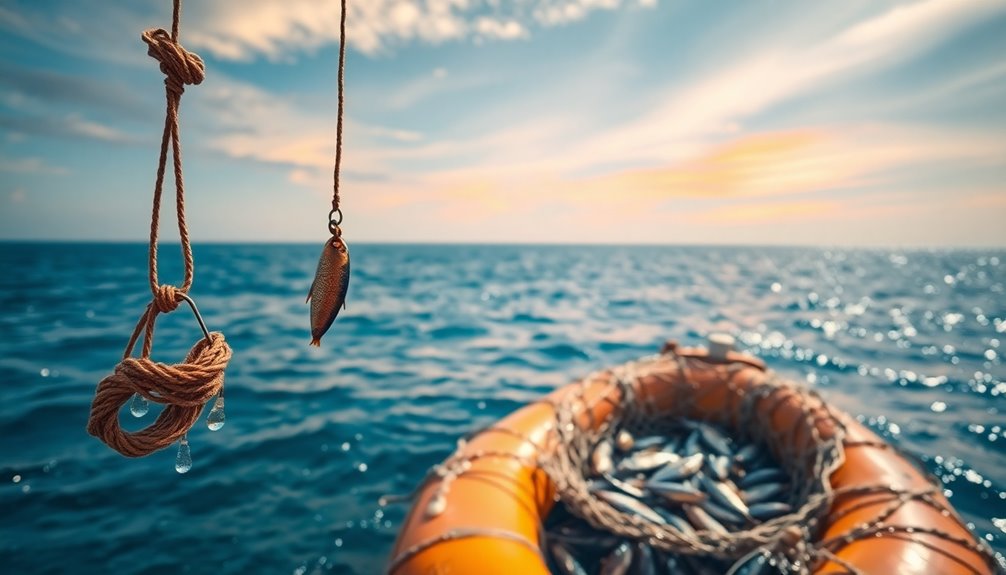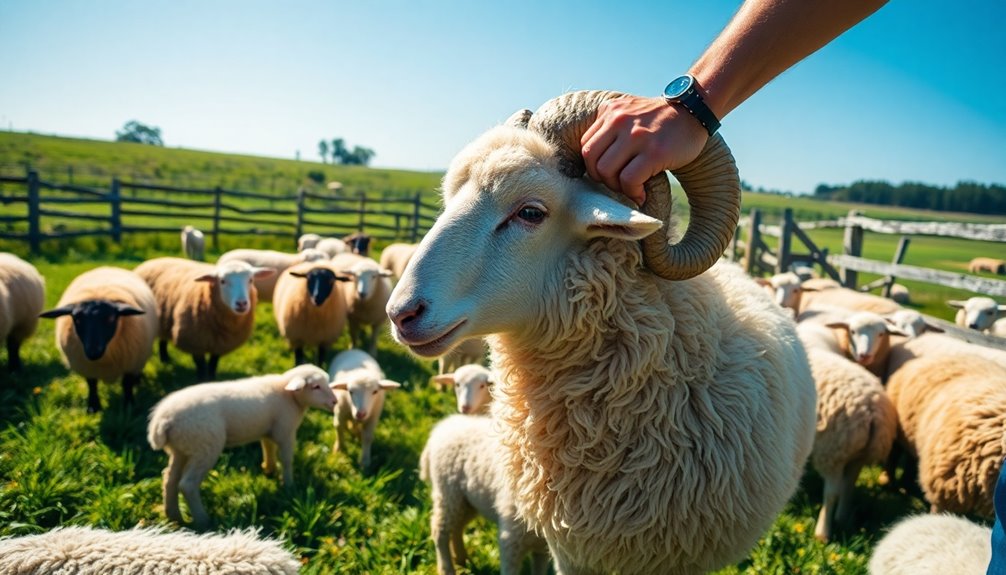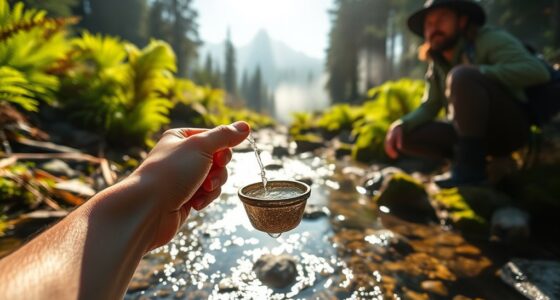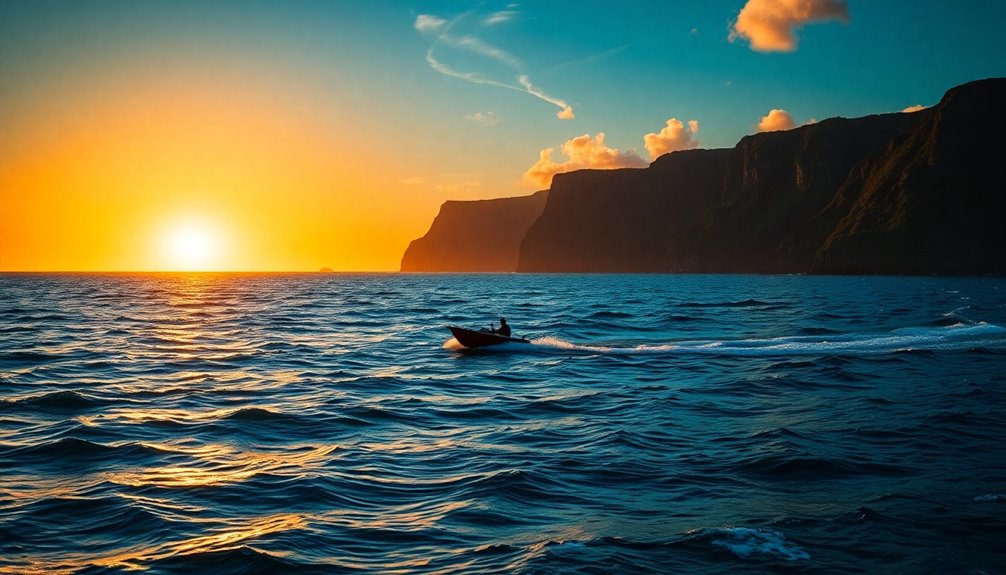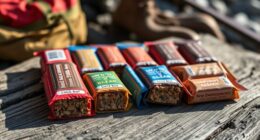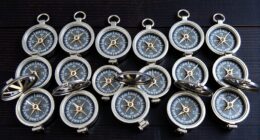When you're adrift at sea, finding food is crucial for survival. Start by collecting edible seaweeds like nori or dulse, which are rich in nutrients. Fish and seabirds are also good sources of sustenance; improvise fishing gear using shoelaces and safety pins. Ration your food intake and stay hydrated by collecting rainwater. Be cautious of the water's cleanliness to avoid toxins. Observing birds and floating debris might lead you to land. Your resourcefulness and knowledge can be the key to survival, and you might discover more tips to enhance your chances.
Key Takeaways
- Collect and consume edible seaweed like nori and dulse, ensuring they are harvested from clean waters to avoid toxins.
- Improvise fishing gear using shoelaces for lines and safety pins for hooks to catch small fish.
- Use fish guts as bait to attract larger fish and consider nighttime fishing for better success rates.
- Ration food and water intake carefully to extend resources and maintain hydration, prioritizing electrolyte balance.
- Observe floating debris or seabirds to help locate potential land or fishing opportunities nearby.
Introduction
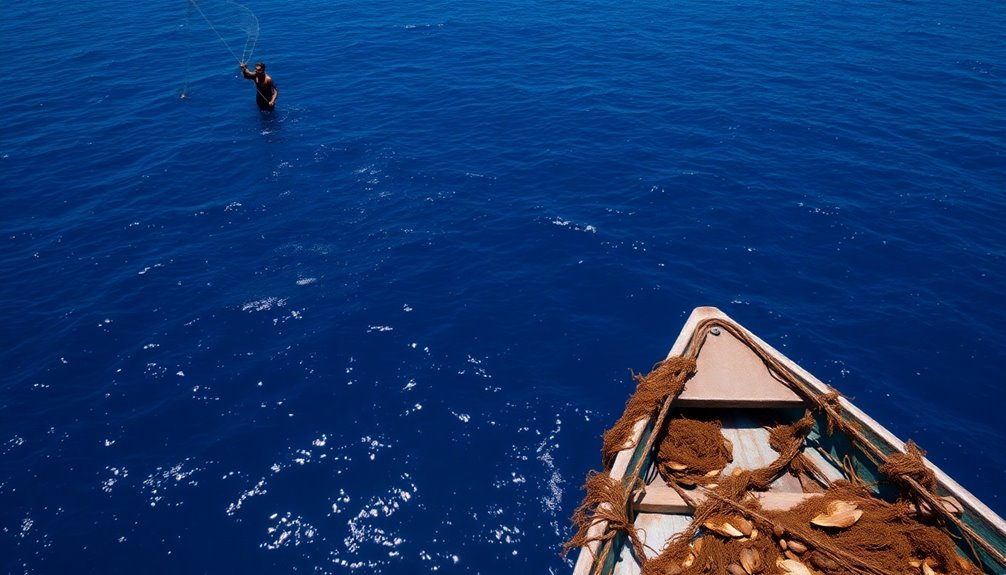
When you find yourself adrift at sea, understanding survival essentials becomes vital.
You'll need to prioritize food sourcing strategies, from rationing supplies to identifying local marine life.
This knowledge can significantly increase your chances of staying nourished until help arrives.
Survival Essentials for Oceanic Conditions
Survival at sea often demands quick thinking and resourcefulness, making essential items crucial for your well-being. Prioritize a first-aid kit, signaling devices, and ample drinking water to sustain life and increase your chances of rescue.
Ration your stored water wisely; dehydration sets in quickly. Collect rainwater or use distillation methods to purify seawater when necessary.
For finding food, fishing becomes your primary source; you can improvise gear from available materials like shoelaces for lines and safety pins for hooks. Seaweed also offers nutritional value but only consume it if you have adequate fresh water to avoid dehydration.
Maintaining a calm mindset and a daily routine will bolster your psychological resilience, aiding in survival and decision-making while adrift. Additionally, understanding the importance of long-term survival foods can help you make informed choices for future food sources when resources are limited.
Survival Food Sourcing Overview
Navigating the challenges of food sourcing at sea requires a keen understanding of your environment and available resources. When you're adrift, focus on collecting seaweed, fish, birds, plankton, and seashore delicacies. Each of these offers unique nutritional benefits.
Seaweed, for instance, is rich in protein and vitamins but should be consumed with plenty of water. You can find food by fishing with improvised gear like shoelaces for line and safety pins as hooks, especially at night when fish are drawn to light.
Additionally, birds can be caught using snares; their flesh is safe to eat both raw and cooked. However, always be cautious to avoid diseased or poisonous fish, which can be identified by their spikes, discoloration, or foul odors.
Survival Food Sourcing Methods
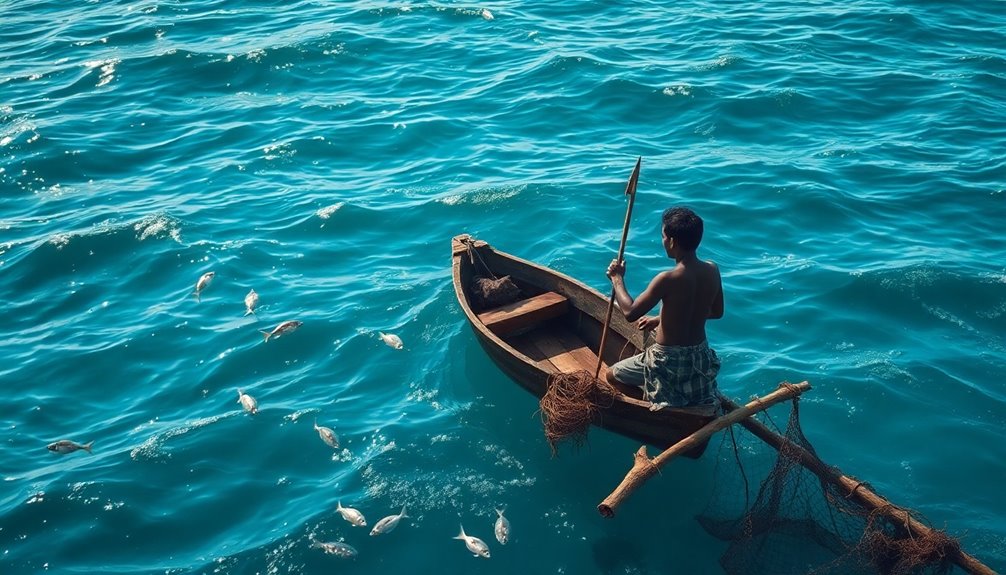
In the vast expanse of the ocean, knowing how to source food can mean the difference between life and death.
You can start by catching a fish using improvised gear—think shoelaces for fishing line and safety pins for hooks. Fish can be eaten raw or cooked, making them a versatile food source.
Don't overlook seaweed; it's nutritious and rich in protein and vitamins, but remember to drink adequate water alongside it to avoid dehydration.
If fishing proves challenging, consider trapping birds for their flesh, which offers vital nutrients. Additionally, foraging along the shoreline can yield crabs, lobsters, and octopus.
Lastly, while plankton isn't tasty, it's nutrient-rich and can be gathered with nets for sustenance.
Nutritional Needs During Emergencies

When you're adrift, meeting your nutritional needs is key to boosting your endurance.
Weather conditions can significantly impact the availability of food, so you'll need to adapt your diet based on what's accessible.
Focusing on nutrient-rich sources will help keep you energized and ready to face the challenges ahead.
Nutrient Survival Boosts Endurance
Surviving an emergency at sea demands more than just willpower; it requires a strategic approach to nutrition. When you're stranded at sea, maintaining your nutrient intake is crucial for endurance.
Prioritize lots of protein-rich foods like fish and shellfish to preserve muscle and energy levels. Essential vitamins and minerals, particularly vitamin C from seaweed, can boost your immune system and prevent debilitating conditions like scurvy.
Rationing your food intake helps manage hunger, allowing you to extend your resources over time. Incorporating a variety of sources, including plankton and birds, enhances your diet and increases your chances of survival.
Staying hydrated and maintaining electrolyte balance are essential for reducing fatigue and keeping your body functioning optimally.
Weather Conditions Affect Food Availability
Weather conditions can significantly impact your ability to find food while stranded at sea. Extreme weather, like storms or high winds, can disrupt your fishing efforts, so it's crucial to assess the sea state before trying to catch food.
Your nutritional needs increase during these stressful situations, and high-calorie sources like fish and seaweed become vital. Colder water temperatures may push fish deeper, requiring you to adapt your fishing techniques.
On rainy days, you can catch rainwater, which is essential for hydration and aids digestion, especially when consuming protein-rich foods. Stay aware of weather patterns; sunny days enhance visibility for spotting fish, while cloudy conditions might force you to adjust your strategies to locate those elusive food sources.
Foraging Sea Vegetation Wisely

Foraging for sea vegetation can be a rewarding way to supplement your diet while adrift. Seaweed is nutrient-rich, providing protein, carbohydrates, and essential vitamins. However, always consume it with plenty of water to prevent dehydration.
Look for common edible seaweeds like nori, dulse, and wakame, which you might find floating or washed ashore. When foraging, choose vibrant colors and firm textures; avoid dull or slimy varieties, as they may be spoiled.
Harvest seaweed from clean waters, steering clear of areas near industrial runoff or pollution to minimize toxin risks. To enhance your survival, eat seaweed raw or wrap it around fish or other foods for added flavor and nutrients, making every bite count. Incorporating unique homemade fruit juice recipes can also provide additional hydration and nutrition while at sea.
Fishing Gear and Techniques

When you're adrift, having the right fishing gear and techniques can make all the difference in your survival.
You can improvise fishing lines from shoelaces and create hooks from safety pins or bones. Small fish often gather beneath your raft, so use hand-lines with flashy lures to attract them.
Nighttime fishing can yield better results; fish are drawn to light, increasing your chances of a successful catch. If you manage to catch a fish, use its guts as bait to lure in larger ones, enhancing your food sources.
However, stay cautious when fishing in areas with larger fish, as they can threaten your raft's stability. If necessary, cut the line to prevent capsizing.
Fishing With Improvised Tools
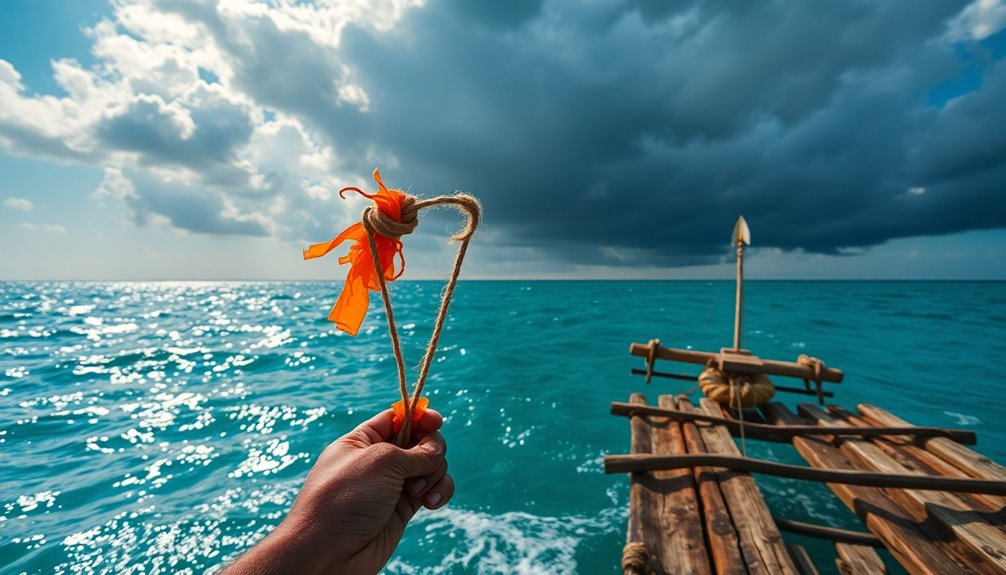
Improvised fishing tools can be a lifesaver when you're adrift, allowing you to catch essential food with limited resources. You can create fishing gear using shoelaces or threads as lines and fashion safety pins or bones into hooks.
Small fish often gather under life rafts, making it easier to catch them with hand-lines fitted with shiny lures that attract fish. Nighttime fishing can yield better results, as fish are drawn to light; use makeshift lights to lure them closer.
Once you've caught smaller fish, use their guts as bait to attract larger ones. Employ jigging techniques by moving your hook up and down in the water, helping to attract fish without snagging your raft or losing your gear.
Fishing Gear Limitations
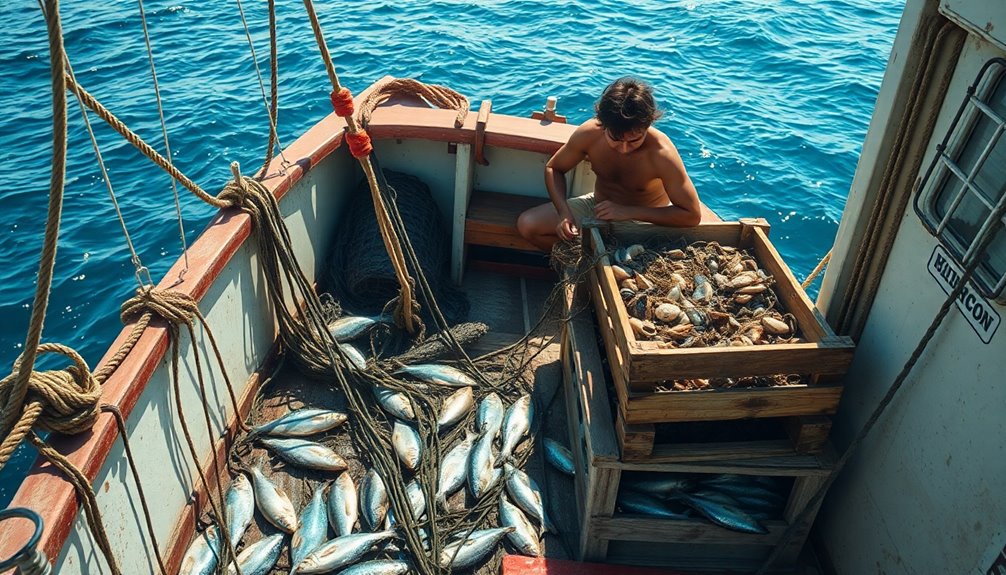
When you're adrift, understanding local fishing regulations becomes crucial, as they can dictate what gear you can use and how to fish sustainably.
You might need to adapt your techniques to avoid harming fish populations while still securing your food source.
Keeping these guidelines in mind helps you fish responsibly, even with limited gear.
Local Fishing Regulations Matter
Understanding local fishing regulations is essential for anyone looking to cast their line responsibly. These rules often dictate the types of gear you can use, including limitations on net sizes, hook types, and line weights. Adhering to these regulations helps protect marine ecosystems.
Additionally, many regions have specific fishing seasons for certain species, so knowing these dates can prevent fines and promote sustainable practices. You'll also encounter catch limits for various fish, which restrict how much you can keep while adrift.
Sustainable Fishing Techniques
Sustainable fishing techniques are vital for ensuring you can catch fish without depleting resources or harming the environment.
You can improvise fishing gear using materials at hand, like shoelaces as fishing line and safety pins or bones for hooks. To catch small fish, try using hand-lines with flashy lures beneath life rafts, as they're often attracted to floating objects.
Nighttime fishing can also be more fruitful; fish are drawn to light, so utilize any light source you have. Don't forget to use the guts of your caught fish as bait to lure larger ones.
Understanding local fish species and their behaviors helps you avoid large catches that may threaten your raft's stability, ensuring a sustainable approach while adrift.
Survivor Stories From Shipwrecks
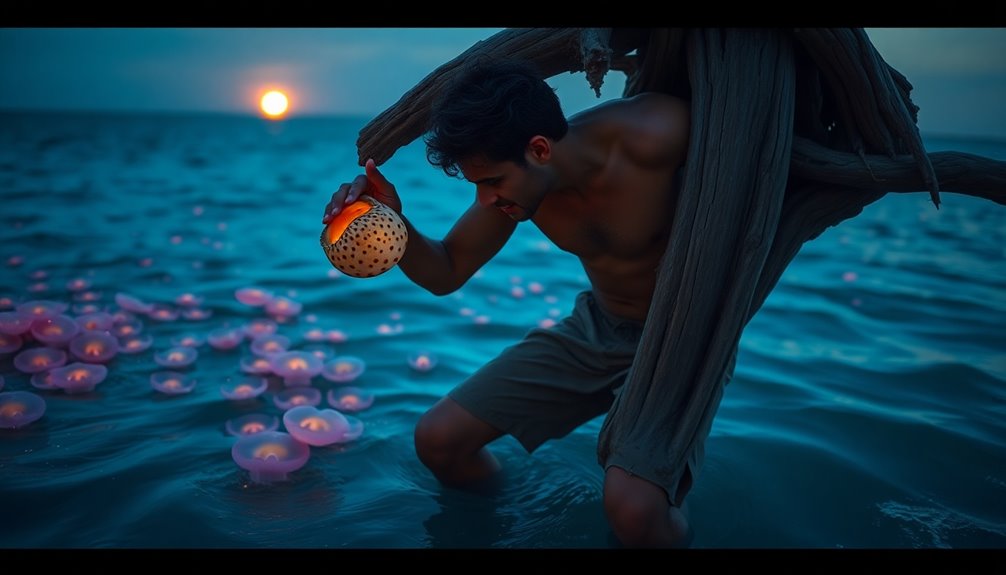
Survivor stories from shipwrecks reveal the remarkable resilience and ingenuity of those adrift at sea.
Take the tale of the Essex survivors, who caught fish and seabirds for sustenance during their 33-day ordeal. Their adaptability was crucial when traditional food supplies vanished.
In the 1990 shipwreck of the Lazarus, survivors used makeshift fishing gear to consume raw fish, highlighting the necessity of improvisation.
Poon Lim's harrowing experience during World War II, where he survived 133 days adrift, showcases his ability to catch fish with improvised hooks and collect rainwater.
After the Aldea sank in 1982, survivors ate sea turtles and fish, demonstrating the importance of knowing local marine life.
The 1996 Maine crew emphasized cooperation to secure food through fishing and scavenging.
Conclusion
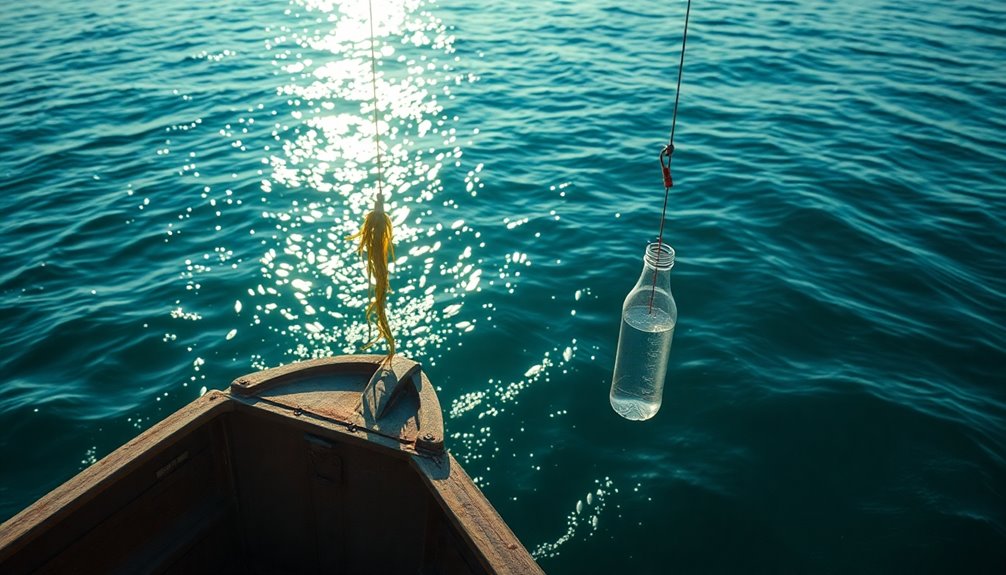
The stories of those who've faced the harrowing experience of being adrift at sea highlight the importance of resourcefulness and knowledge in survival situations.
When you find yourself in such a predicament, focus on sustainable food sources like seaweed, fish, and birds for essential nutrients. Remember to stay calm; rationing your supplies and prioritizing small, frequent meals can help maintain your energy.
Improvised fishing techniques, using shoelaces for line and safety pins for hooks, can enhance your chances of catching fish.
Don't forget about collecting rainwater, which is crucial for hydration—use makeshift containers or absorbent fabrics.
Lastly, be aware of local marine life to avoid dangerous or diseased options, ensuring you stay safe while foraging for food.
Additional Resources
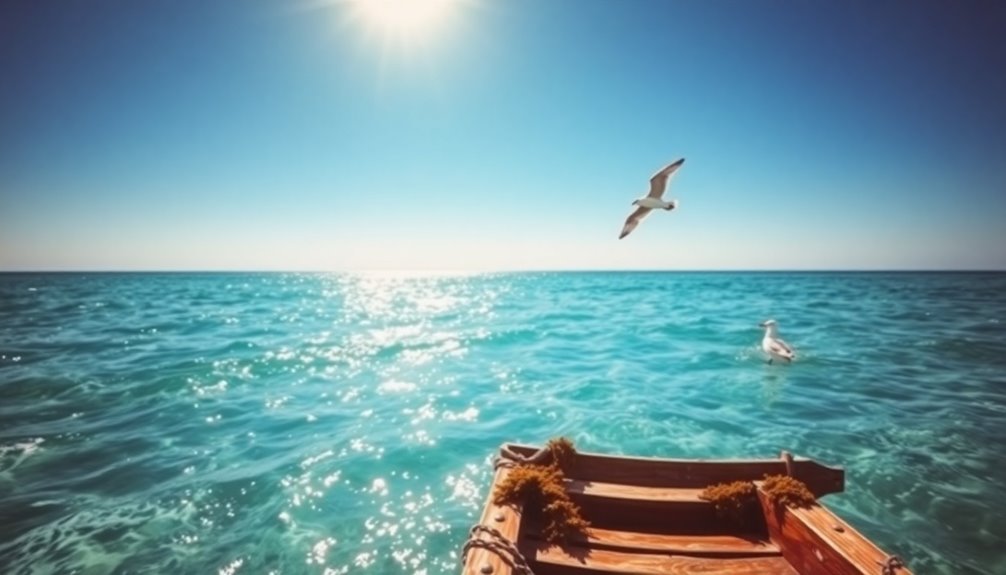
When you're adrift, having access to reliable resources can make all the difference in your survival journey.
Seaweed's a nutritious option, but remember to drink plenty of water alongside it to stay hydrated.
Utilize improvised fishing techniques—shoelaces can serve as lines, and safety pins or bones can act as hooks.
Look for small fish gathering under your life raft; they're easier to catch with hand-lines or jigging without snagging.
Be strategic about rationing your food; prioritize fish and use fish guts as bait for larger catches.
Familiarizing yourself with local fish species helps you avoid dangerous catches.
Keep an eye out for floating debris or birds that might help you find any signs of land.
Frequently Asked Questions
How to Survive Being Adrift at Sea?
When you're adrift at sea, focus on securing fresh water first; rain collection is vital.
Conserve your energy and stay calm to make better decisions. Use available materials to create improvised fishing gear and try to catch small fish.
Keep an eye out for signs of land, like birds or water color changes.
Establishing a daily routine for tasks like fishing and signaling for help can also boost your morale and keep you structured.
How to Find Food in a Survival Situation?
In a survival situation, you need to be resourceful. Look for edible plants or berries, but ensure they're safe to eat.
If you're near water, try catching fish or crabs, which are nutritious options. Setting snares for birds can also provide food.
If you spot insects, they can be a protein source too. Always prioritize hydration; drink plenty of clean water to support your body while you gather food.
Stay alert and adaptable!
How to Drink Water When Stranded at Sea?
When you're stranded at sea, drinking water becomes crucial for survival.
First, collect rainwater using containers or fabrics, avoiding the initial catch to prevent contamination.
You can also create a solar still by digging a hole and covering it with plastic.
If you soak clothing in seawater before a rainstorm, you can wring it out to reduce salt content.
Remember to ration your water wisely, prioritizing hydration over food intake.
How Do You Survive at Sea in Order to Stay Alive?
To survive at sea, you need to conserve energy and ration resources effectively.
Focus on collecting rainwater—it's vital for hydration—while avoiding seawater due to its dehydration effects.
Use improvised fishing gear to catch small fish, and stay observant of wildlife, as their behavior can signal nearby land or food.
Most importantly, maintain a positive mindset and establish a routine to keep your mental resilience strong during this challenging experience.

